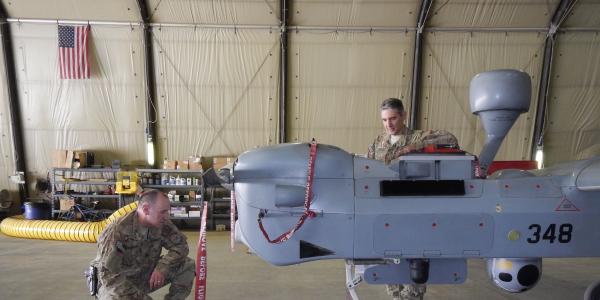To Man or Not to Man?
The use of unmanned aerial vehicles offers new capabilities in a variety of operations. In some cases, the aircraft can replace their counterparts that carry human pilots or passengers. But each mission must be chosen carefully—not to be overshadowed by the rush to employ drones.
In the vast majority of drone operations, a human is in the loop as a controller—but not always. Some unmanned aerial vehicles, or UAVs, can be programmed to follow a particular course and perform specific missions. In the commercial space, this makes for good business. The military has applications for completely unmanned drone flights. However, in most applications, a human controller is required to alter a drone’s course, release weapons or take photos, for example.
In initial U.S. Navy UAV missions, the aircraft will function as tankers for carrier air wings. It already has been shown that a UAV can operate from an aircraft carrier deck, making the refueling mission a good one. The UAV could be assigned an orbit and programmed to begin delivering fuel when the drogue is engaged or pushed in a certain distance and cease when the drogue is disengaged or extended full length. A human should be in the loop for when a deviation from the programmed mission is required. This might entail an aircraft in distress calling for the tanker to proceed directly to it. Other plausible scenarios include the UAV tanker’s program needing to be altered.
UAVs are not infallible. Yes, humans fly UAV reconnaissance missions and make decisions on where to go and what to look for. They fly UAV attack missions and “pull the trigger” to ensure target accuracy. But even when humans are in the loop, mistakes are made and lives are lost.
Everyone is aware of the phenomenon called the “fog of war.” The term seeks to capture the uncertainty in situational awareness among warfighters in the heat of battle, despite their full 360-degree, spherical knowledge of the environment. They make mistakes or misinterpret what they see or sense. When a UAV is placed into battle, even with a human controller, the problem is compounded. Controllers can see only what the cameras on the UAV show them. While they can train those cameras to get a better view, the cameras cannot create a complete picture of the environment. And the controller cannot use his or her senses to fill in the blanks. Only a human pilot in an aircraft can do that. And even then, mistakes can be made, as has been demonstrated on too many occasions.
In the constantly changing environment of combat, either in the air, at sea or on the ground, only a human being with an unconstrained core processor that can change programs in a millisecond can stay abreast of—or ahead of—ongoing events. Human cameras, human sensors and human brains far outperform a computer-driven machine in these fluid scenarios. You can call me old-fashioned, but I still believe I can outperform machines in an unscripted conflict.
There are many excellent uses for UAVs in the civilian, commercial and military arenas. But their value must be weighed carefully against the desired outcome and mission to ensure the best application for the devices.
Adm. Richard C. Macke, USN (Ret.), is a former Joint Staff J-6 and a former commander of the U.S. Pacific Command.





Comments